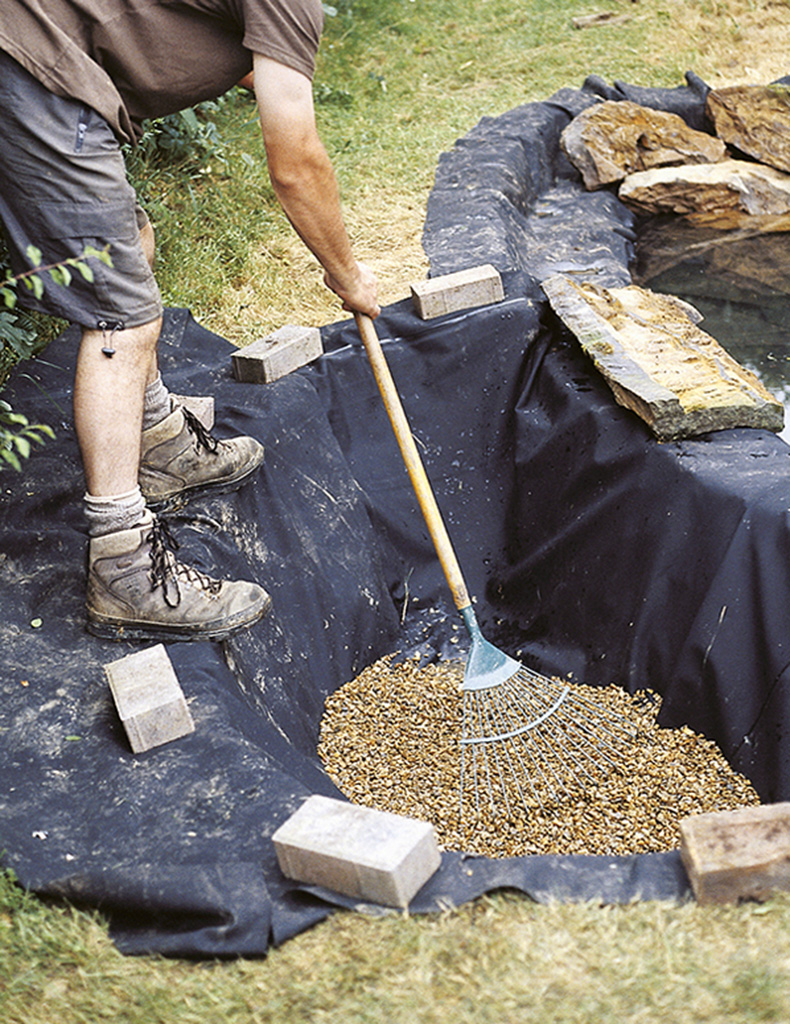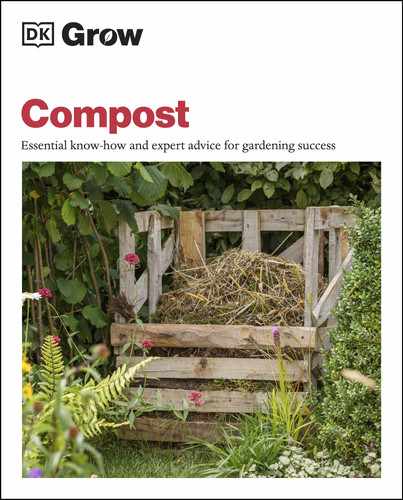MAKING A BOG GARDEN FOR WILDLIFE
Your plant choices are partly determined by the soil conditions in your plot, but you can widen the range by using your homemade compost to help create an area of moist ground known as a bog garden. Plants adapted to the damp soil beside pools and streams will thrive there, creating a habitat for pollinators drawn to their flowers, as well as amphibians which will take cover beneath the leaves.

Widen your plant choices by creating an area of damp soil in the garden.
WHAT IS A BOG GARDEN?
An area of boggy soil will occur close to a natural pond where water breaks the banks after heavy rainfall. If you have such an area in your garden already, you can use it for a range of beautiful plants that enjoy wet soils. If you do not have a pond or you have installed one in an area of free-draining sandy soil that dries out quickly, you can still enjoy these moisture-loving plants by making a bog garden with some pond liner. In a small garden, you could sink a watertight half barrel into the ground and plant it with baskets of marginals such as marsh marigolds (Caltha palustris) or a dwarf waterlily (Nymphaea pygmaea) to provide some open water for frogs and toads, then surround it with a bog garden to broaden your biodiversity.

Hostas and moisture-loving primulas, irises, and many ferns thrive in boggy soil.
ESTABLISHING A BOG GARDEN
To provide a suitable site for a bog garden, choose a partly shaded spot that receives sun for about half the day from spring to early autumn. This location will help to ensure that the soil does not dry out too quickly in hot summer sun.
Make the bog garden in early spring so that your plants can establish quickly when the soil warms up, siting the sun-loving species you have chosen in the area that receives the most light during the summer months. Once the garden is established, use rainwater from a barrel, or tap water if you have no other source, to top up the moisture levels during hot or windy weather.
The bog garden will also benefit from an annual mulch of homemade compost applied each spring, which will help to lock moisture into the soil by reducing evaporation from the surface. As the mulch continues to decompose it will also help to restock the soil with the nutrients bog plants need to thrive.

The pollen-rich flowers of the leopard plant (Ligularia ‘The Rocket’) will lure bees to your bog garden.
HOW TO MAKE A BOG GARDEN
YOU WILL NEED String or chalk • Spade • Pond liner or recycled plastic sheet • Bricks or stones • Fork • Rake • Gravel or coarse grit • Well-rotted homemade compost • Scissors or knife • Range of bog plants (see Plants for Wildlife-friendly Bog Gardens)
Compost Planting Projects | MAKING A BOG GARDEN FOR WILDLIFE

1 Mark out an area for your bog garden using string or chalk and dig out the soil to a depth of about 2ft (60cm). Set the soil to one side. Place the liner or plastic sheet in the hole and push it into the corners. Weigh down the edges of the liner at the top of the hole with bricks or stones.
Compost Planting Projects | MAKING A BOG GARDEN FOR WILDLIFE

2 Using a fork, pierce the liner at 2–3ft (60–90cm) intervals to create drainage holes—you want the area to retain water but not to become completely waterlogged.
Compost Planting Projects | MAKING A BOG GARDEN FOR WILDLIFE

3 To ensure that the drainage holes do not become blocked over time, causing the soil in your bog to stagnate, cover the liner with a 3in (7.5cm) layer of gravel or coarse grit.
Compost Planting Projects | MAKING A BOG GARDEN FOR WILDLIFE

4 Fill the bog garden with the soil you excavated when digging the hole, together with some well-rotted homemade compost. Cut any visible excess liner from around the edges. Add a few cans of water from a water barrel and let drain. Plant up with bog plants and add a 2in (5cm) compost mulch.
TOP TIP DO NOT STOCK YOUR BOG GARDEN WITH INVASIVE PLANTS SUCH AS GIANT RHUBARB (GUNNERA MANICATA OR GUNNERA TINCTORIA), SKUNK CABBAGE (LYSICHITON AMERICANUS), OR GIANT BUTTERBUR (PETASITES JAPONICUS).
Compost Planting Projects | MAKING A BOG GARDEN FOR WILDLIFE
PLANTS FOR WILDLIFE-FRIENDLY BOG GARDENS
Marsh marigold (Caltha palustris) • Umbrella plant (Darmera peltata) • Gravel root (Eupatorium purpureum) • Meadowsweet (Filipendula purpurea and F. ulmaria) • Water avens (Geum rivale) • Moisture-loving irises (Iris ensata or I. sibirica) • Leopard plant (Ligularia ‘The Rocket’) • Gooseneck loosestrife (Lysimachia clethroides) • Cardinal flower (Lobelia cardinalis) • Hostas (Hosta) • Bee’s primrose (Primula beesiana) • Candelabra primula (Primula japonica) • Ornamental rhubarb (Rheum palmatum) • Burnet (Sanguisorba)
Compost Planting Projects | MAKING A BOG GARDEN FOR WILDLIFE
NEED TO KNOW
- Bog plants like moist soil, but they do require some drainage and air around their roots, unlike aquatic plants, the roots of which are submerged beneath the water.
- If your bog garden has an area of compacted soil that is always waterlogged, break up the hard pan on the surface with a fork and add a 2–3in (5–7.5cm) mulch of compost to improve the soil structure and increase drainage.
